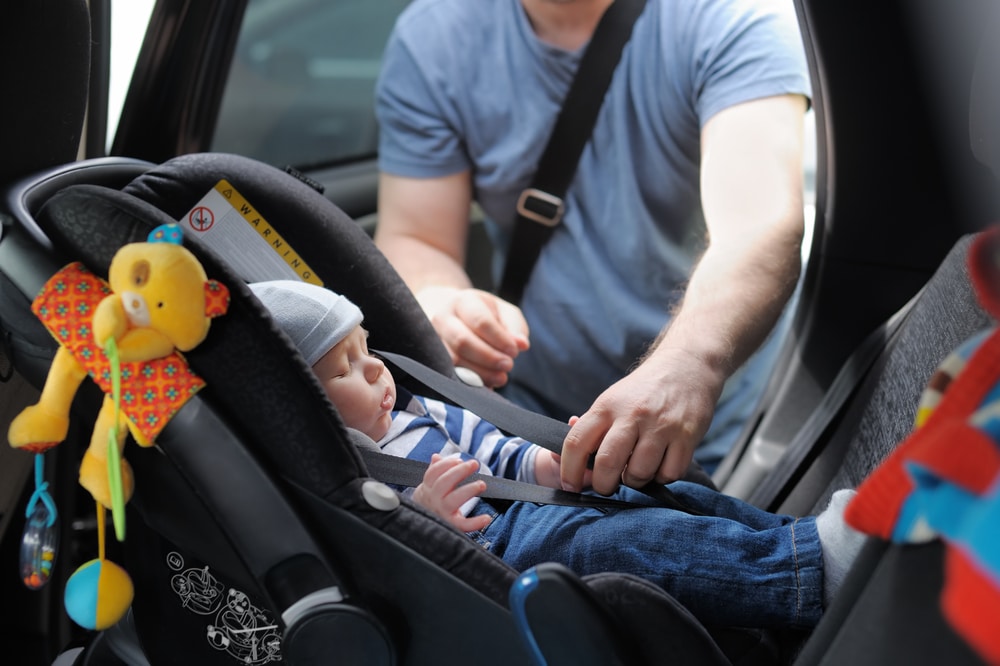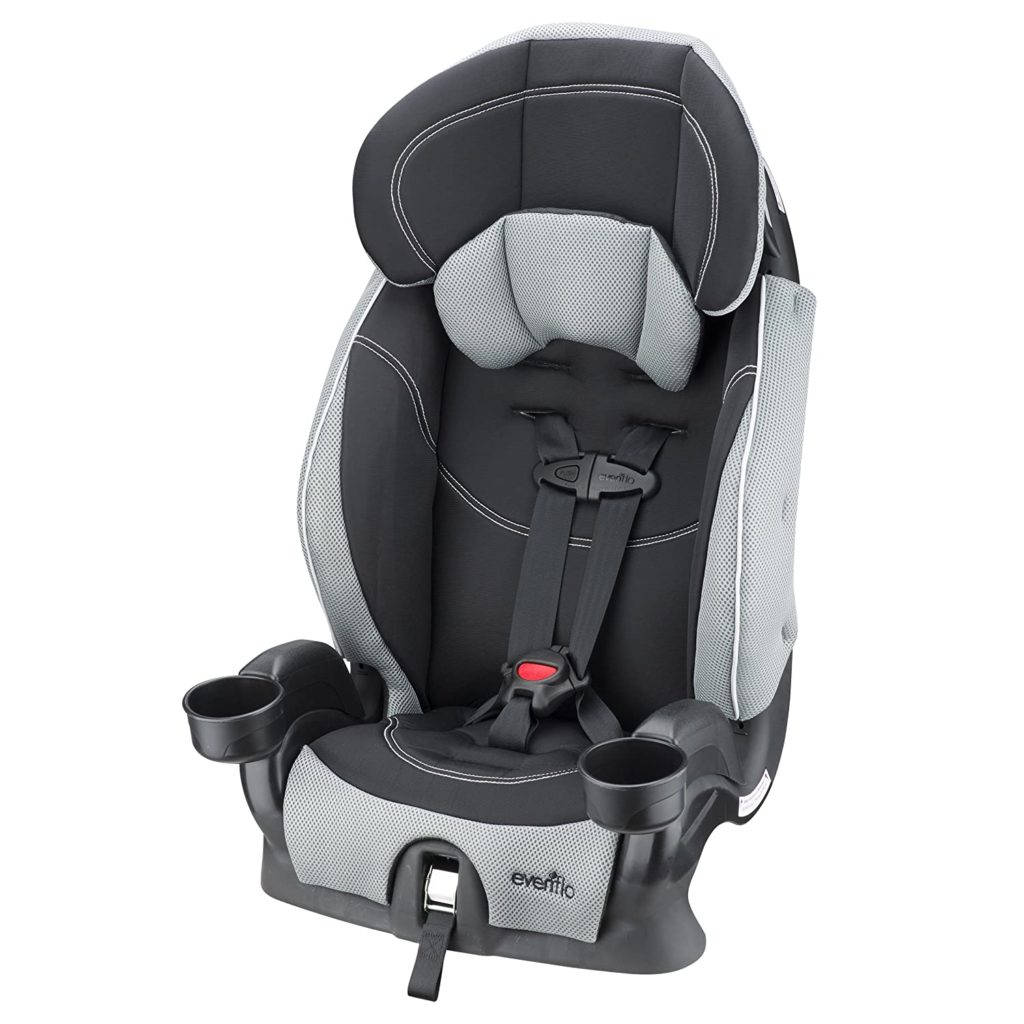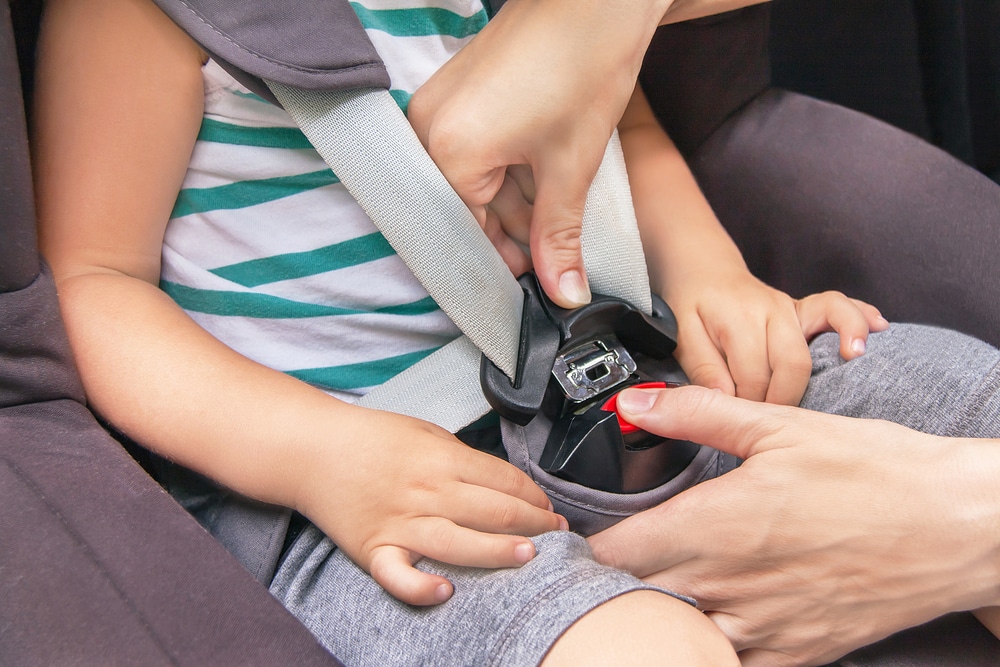Statistics show that while car crash fatalities have been declining since 1975, they are still a leading cause of death for children in the United States, accounting for more than 600 child passenger fatalities per year since 2019.
An even more alarming statistic is that 35% of children killed in a car crash had no seat belt or other restraints, including car seats or booster seats. Furthermore, during the year 2015, there is documentation of over 600,000 children who traveled in cars without using seat belts or car seats.
Most states enforce car seat and seatbelt laws to curb the number of fatalities and injuries in car crashes, which has shown success in reducing car crash fatalities. Oregon is no exception. Below, we will expound upon Oregon car seat laws.

Car Seat Laws for Infants and Toddlers Under 3 Years Old

Oregon Car Seat laws require all children under three years of age or under 40 lbs. to ride in a forward or rear-facing car seat. All infants, age 0-2 years, must ride in a rear-facing car seat. Rear-facing car seats are safer and more protective than forward-facing car seats.
After age 2, toddlers can graduate to using a forward-facing car seat. Regardless of age, children are required to use a car seat until they are 40 lbs. as that is the maximum weight capacity that forward-facing car seats support. Rear and forward-facing car seats should never be placed in the front passenger seat.
Booster Seat Laws for Toddlers and Children Ages 3-7

Children who have surpassed 40 lbs. can graduate to a booster seat. The Oregon Booster Seat law requires children to use a booster seat in the back seat of the car until they reach 4’9” in height, which usually places booster seat usage in the 3-7-year age range.
Booster seats add the extra height needed for a child to wear a standard seat belt correctly, that is, that the seat belt fits low across the hips or over the thighs, and the shoulder strap runs across the chest and not over the neck.
If the backseat seat belts do not have a shoulder strap, then a booster seat is not required as you can simply shorten the seat belt to fit snugly across the thighs.
Children Seat Belt Laws and Recommendations

Once a child is tall enough to wear a seat belt properly, then Oregon seat belt laws require all persons to wear seat belts when seated in a vehicle that has them. Government officials strongly suggest that children and adolescents sit in the back seat as opposed to the front passenger seat to protect them from the hazards of airbag deployment.
If you are unsure of whether your child is big enough to use a seat belt without a booster, the Oregon DMV has a checklist of questions to help you make an informed decision.
Teenager Safety Belt Laws

Teenagers that are sixteen and seventeen have officially reached the legal driving age and are surely chomping at the bit to begin driving. Due to their inexperience, they are often the most reckless and irresponsible drivers on the road. The same safety belt laws, which apply to all adults, also apply to new drivers and their teenage passengers. However, since they are not legal adults, we want to emphasize their responsibilities as drivers and passengers.
According to the Oregon Department of Transportation standards and specifications, if teenagers are driving younger minors, they are responsible for ensuring that they are secured with a safety belt or the required car or booster seat.
Penalties for Violation
Any violation of Oregon seat belt, car seat, or booster seat laws is labeled as Class D traffic infractions, which are punishable by a minimum of $115 fine in Oregon.
Exemptions
There are exemptions to Oregon’s car seat law, booster seat law, and seat belt law. They fall under two main categories: vehicular and health.
Vehicular exemptions refer to the state and age of the vehicle upon purchase. For example, if the vehicle doesn’t have seat belts installed because it is a vintage model, you may be exempt from paying a fine. Additionally, if the vehicle’s seats are all filled by adults, and there is no space for a car seat, you might be able to avoid a fine. Taxis may also be exempt from car seat laws. That said, holding your infant or child instead of securing them in a car seat is highly dangerous and never recommended.
Health exemptions require you to present a signed and certified statement to the director of transportation explaining why a car seat, booster, or seat belt would physically harm a child. Many exemptions are due to medical conditions and body size issues. Upon review and acceptance of the statement, the transportation department will issue a certificate of exemption.
Types of Car Seats for Infants and Small Children
There are three types of car seats acceptable under Oregon car seat laws depending on age, height, and weight requirements:
- Rear-Facing Car Seats: These are convertible or all-in-one seat that faces the vehicle’s back. These are the most protective seats for children as most crashes occur at the front or side of the car, causing passengers to lunge forward. By facing the rear, a child will thus thrust back into the car seat, cushioning the child from spinal or head injuries.
- Forward-Facing Car Seats: A convertible, combination, or all-in-one seat with over-the-shoulder straps that installs flush up against the back seat so that the child is facing forward. These car seats are less protective than rear-facing seats and are meant for children 3-years of age and older.
- Booster Seats: These are either full seats or backless seats that bring the child up to the height requirements necessary for a seatbelt to lie across their thighs and for the shoulder strap to fit across their chest.
How to Install Car Seats
Installing car seats are straightforward, and your car seat should come with clear instructions for installment. Proper installment is crucial to Oregon car seat law and Oregon booster seat law, as incorrect installment nullifies their protective capacities.
Below, we provide some essential tips on proper installment and placement for boosters, rear-facing car seats, and front-facing car seats.
- Front-Facing Car Seats: These car seats come with a strap that attaches to the back of the seat. You should ensure that you firmly tie the strap to your car’s built-in tether anchor, which secures your child’s head from whiplash.
- Rear-Facing Car Seats: You want to install these car seats at an incline so that the seat is tilting slightly backward (so that the child is almost looking up towards the ceiling) to ensure your child’s air-passage is not obstructed. A forward tilt may cause your baby’s head to fall forward, closing their air passage.
- Booster Seats: Booster seats need to be flush up against the car’s backseat. You place your child on top of the booster, then use the seatbelt to secure them in place. The booster will allow them to be tall enough for the shoulder strap to fall properly across their chest.
If you are having difficulty with your car seat installment, you can schedule an appointment for a free installation service with your local fire station. There are also car seat check-up events hosted by Oregon Impact, where you can receive installment assistance and instruction.






